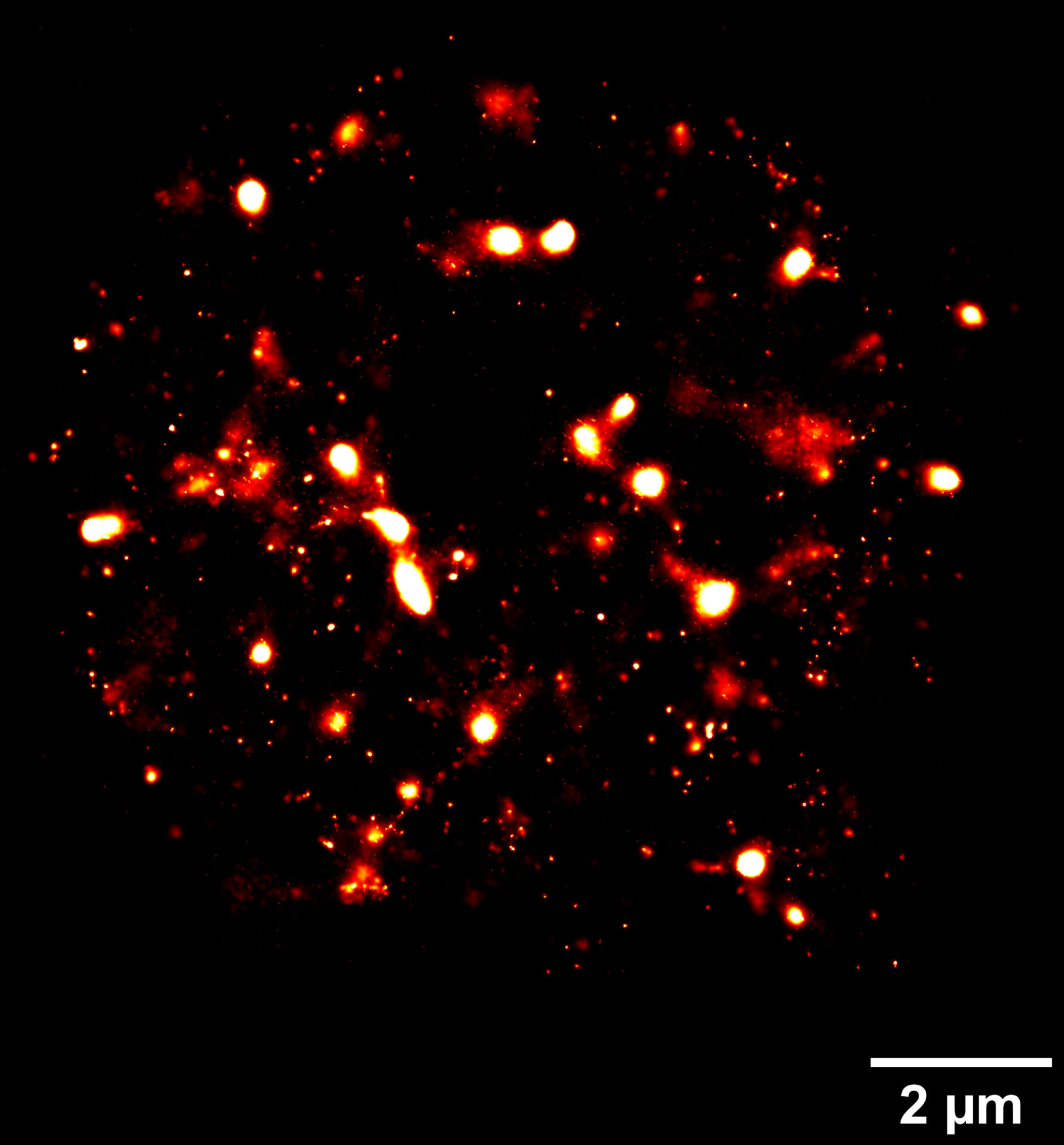Introduction: The carotid body (CB) contains specialised O2 sensitive cells located at the carotid bifurcation that monitor the blood PaO2 supplying the brain to initiate corrective cardiovascular respiratory reflexes. O2 sensitivity of the CB is modulated by G-protein-coupled-receptor signalling (1). The angiotensin 1 receptor (AT1R) is expressed in the CB and angiotensin II causes chemoexcitation. In pathology, changes in AT1R signalling promote CB hyperactivity. However, little is known about the single molecule distribution of AT1R in CB type I cells or PC12 cells- a closely associated cell line, which may underpin signalling microdomains. Furthermore, it is not clear if AT1R membrane expression can be altered by exposure to hypoxia. This study aimed to reveal if membrane AT1R are clustered and if expression is altered by chronic hypoxia. Methods: AT1R expression was assessed in PC12 cells (an O2 sensitive cell line used to model the CB type I cell). PC12 cells (passage number 10-30) were plated onto human placental collagen and were incubated in media equilibrated with either 1% O2 or 20% O2 for 4, 12 and 24 hours. At each time point, cells were fixed and stained with primary antibodies (1:500 anti-AT1R and 1:500 anti-tyrosine hydroxylase-TH). Cells were stained with secondary F(ab) fragment antibodies conjugated with Alexa fluor 647 (1:1000) and 488 (1:1000). Cytosolic TH and membrane AT1R expression were assessed by confocal microscopy. Membrane AT1R clustering was visualised using direct STochastic Optical Reconstruction Microscopy (dSTORM). Data was expressed as mean ± S.E.M and significance determined with two-way repeated measures ANOVA and taken as P<0.05. Results: Exposure of PC12 cells to hypoxia (1% O2), caused a significant increase in cell area after 12 hours (normoxia 142.8±5.8μm2 (n=93), hypoxia 164.9±6.8μm2 (n=81), P<0.05) and 24 hours (normoxia 143.3±6.2μm2 (n=72), hypoxia 183.1±8.5μm2 (n=92), P<0.05). Confocal imaging demonstrated that cytosolic TH fluorescence levels were significantly elevated after 12 (normoxia 1333.6±93.5AU, hypoxia 1903.8±135.4AU, P<0.05) and 24 hours (normoxia 1175.8±61.3AU, hypoxia 1765.8±116.0AU, P<0.05). Furthermore, AT1R fluorescence was also significantly increased after 12 hours (normoxia 1315.8±35.1AU, hypoxia 1547.3±53.4AU, P<0.05) and 24 hours (normoxia 1286.6±33.5AU, hypoxia 1592.3±46.6AU, P<0.05) of hypoxia. Preliminary reconstructed images using dSTORM indicated the presence of distinct AT1R clusters on the PC12 cell surface membrane (Figure 1). The presence of clusters was consistent in all 5 cells imaged to date using dSTORM. Discussion: This preliminary data suggests that in O2 sensitive PC12 cells, AT1R are present in distinct clusters or ‘hotspots’ in the cell membrane, raising the potential of AT1R signalling microdomains. More experiments are required to validate this finding and quantify specific cluster parameters. In addition, this data shows that AT1R expression is increased in response to hypoxia along with an elevation in TH and cell area. A key next step will be to assess changes in AT1R expression and clustering specifically in primary CB type I cells as a further move towards the generation of potential novel therapies for cardiorespiratory diseases associated with chronic hypoxia. Figure1. Reconstructed dSTORM image showing distinct AT1R clusters in a PC12 cell.
Physiology 2021 (2021) Proc Physiol Soc 48, PC001
Poster Communications: Angiotensin I receptor clustering and hypoxic remodelling in O2 sensitive cells
Hayyaf S. Aldossary1, 2, Abdulaziz A. Alzahrani1, 3, Deirdre Kavanagh4, Nikolaos Batis5, Clare J Ray1, Prem Kumar1, Andrew M. Coney1, Andrew P. Holmes1
1 Institute of Clinical Sciences, University of Birmingham, Birmingham, B15 2TT, UK., Birmingham , United Kingdom 2 College of Medicine, Basic Medical Sciences, King Saud bin Abdulaziz University for Health Sciences, Riyadh 11481, Saudi Arabia., Riyadh , Saudi Arabia 3 Respiratory Care Department, Faculty of Applied Medical Sciences, Umm Al-Qura University, Makkah 24381, Saudi Arabia., Makkah, Saudi Arabia 4 The Centre of Membrane Proteins and Receptors (COMPARE), College of Medical and Dental Sciences, University of Birmingham, Birmingham, B15 2TT, UK., Birmingham, United Kingdom 5 Institute of Cancer and Genomic Sciences, University of Birmingham, Birmingham, B15 2TT, UK., Birmingham, United Kingdom
View other abstracts by:
Where applicable, experiments conform with Society ethical requirements.

